-
 Bitcoin
Bitcoin $105,278.9859
4.61% -
 Ethereum
Ethereum $2,414.7741
8.20% -
 Tether USDt
Tether USDt $1.0007
0.05% -
 XRP
XRP $2.1600
7.53% -
 BNB
BNB $639.5433
3.75% -
 Solana
Solana $144.3830
9.37% -
 USDC
USDC $1.0001
0.02% -
 TRON
TRON $0.2742
3.84% -
 Dogecoin
Dogecoin $0.1640
8.57% -
 Cardano
Cardano $0.5811
7.49% -
 Hyperliquid
Hyperliquid $37.2466
5.28% -
 Sui
Sui $2.8243
14.84% -
 Bitcoin Cash
Bitcoin Cash $460.8816
2.22% -
 Chainlink
Chainlink $12.9580
11.75% -
 UNUS SED LEO
UNUS SED LEO $9.1359
1.23% -
 Avalanche
Avalanche $18.2302
10.30% -
 Stellar
Stellar $0.2463
7.80% -
 Toncoin
Toncoin $2.9151
7.18% -
 Shiba Inu
Shiba Inu $0.0...01163
9.79% -
 Hedera
Hedera $0.1532
14.01% -
 Litecoin
Litecoin $85.3310
6.29% -
 Monero
Monero $308.8215
2.90% -
 Ethena USDe
Ethena USDe $1.0007
0.03% -
 Polkadot
Polkadot $3.4259
9.42% -
 Dai
Dai $1.0002
0.01% -
 Bitget Token
Bitget Token $4.1742
3.19% -
 Uniswap
Uniswap $6.8272
8.53% -
 Pepe
Pepe $0.0...09939
12.29% -
 Pi
Pi $0.5358
6.03% -
 Aave
Aave $257.3092
12.83%
How to judge the direction of the sudden breakthrough after the Bollinger Channel narrows to the extreme?
A narrowing Bollinger Channel signals low volatility and potential breakout, but traders should confirm direction using volume, candlestick patterns, and other indicators before acting.
Jun 23, 2025 at 11:00 pm
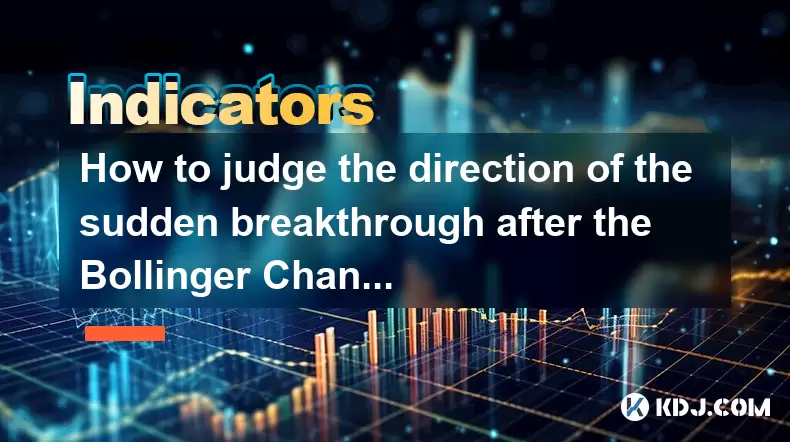
Understanding the Bollinger Channel and Its Narrowing Pattern
The Bollinger Channel is a widely used technical indicator in cryptocurrency trading, consisting of three bands: the middle band (a simple moving average), and two outer bands that represent standard deviations from the middle line. When the price consolidates for an extended period, the channel narrows significantly, indicating low volatility. This phenomenon often precedes a strong price movement or breakout.
Traders closely monitor this narrowing phase because it typically signals an imminent shift in market sentiment. However, predicting the direction of the breakout—whether upward or downward—requires careful analysis beyond just observing the narrowing itself.
Key Insight: A narrow Bollinger Channel reflects market indecision and low volatility but does not inherently indicate bullish or bearish momentum.
Identifying Key Price Patterns During Contraction
During the contraction phase, traders should pay close attention to price action patterns forming within the narrowing bands. These include candlestick formations such as dojis, spinning tops, and inside bars, which often signal potential reversals or continuation moves.
For example:
- A bullish engulfing pattern near support levels may suggest an upcoming upward breakout.
- Conversely, a bearish engulfing pattern appearing near resistance could hint at a downward move.
It's also essential to observe how the price behaves relative to the middle band. If the price remains consistently above the middle line during contraction, this might imply underlying strength and a possible upward breakout.
Important Tip: Combining candlestick patterns with volume indicators can increase the accuracy of breakout predictions.
Analyzing Volume and Order Flow
Volume plays a critical role in confirming the validity and direction of a breakout. As the Bollinger Bands tighten, traders should look for signs of increasing volume, especially if it coincides with a decisive move through the upper or lower band.
A sudden spike in buying volume pushing the price above the upper band may confirm a bullish breakout, while a surge in selling pressure below the lower band suggests a bearish breakout.
Moreover, examining order flow using tools like depth charts or order book imbalances can offer insight into whether large players are accumulating or distributing assets before a breakout occurs.
Crucial Factor: A valid breakout usually comes with a noticeable increase in trading volume, validating the new trend direction.
Leveraging Other Technical Indicators for Confirmation
Relying solely on the Bollinger Bands may lead to false signals. Integrating additional indicators can help filter out noise and improve decision-making accuracy.
Consider combining the following:
- Relative Strength Index (RSI): An RSI value above 70 may suggest overbought conditions, potentially signaling a bearish reversal. Conversely, an RSI below 30 indicates oversold conditions and a possible bullish rebound.
- Moving Average Convergence Divergence (MACD): A bullish MACD crossover during a Bollinger Band contraction could reinforce the likelihood of an upward breakout.
- Support and Resistance Levels: Strong historical support or resistance zones intersecting with the current price zone can act as catalysts for directional breakouts.
Strategic Move: Always cross-reference Bollinger Band signals with other technical tools to avoid premature entries.
Monitoring Market Sentiment and External Factors
Cryptocurrency markets are highly sensitive to news, regulatory changes, and macroeconomic events. Even if technical indicators point toward a potential breakout direction, unexpected developments can override these signals.
Before making decisions based on a narrowing Bollinger Channel, check:
- Recent announcements from major exchanges or blockchain projects
- Regulatory updates from key jurisdictions
- Macroeconomic data releases, such as interest rate decisions
These external forces can influence trader psychology and cause breakouts in directions not supported by pure technical analysis.
Critical Reminder: Fundamental and sentiment-based factors can override technical patterns, especially in volatile crypto markets.
Frequently Asked Questions
Q1: Can I use Bollinger Bands alone to predict breakout direction?
While Bollinger Bands provide valuable insights into volatility and consolidation phases, they should not be used in isolation. Combining them with volume analysis, candlestick patterns, and other indicators enhances accuracy.
Q2: What time frame is best for analyzing Bollinger Band contractions?
Shorter time frames like 15-minute or 1-hour charts are more responsive to immediate price actions, making them suitable for intraday trading. Daily charts offer broader context and are better suited for swing traders.
Q3: How long can the Bollinger Channel remain narrow before a breakout occurs?
There’s no fixed duration. Some contracts last only a few hours, while others stretch across several days. The key is to monitor for signs of impending movement rather than timing the contraction.
Q4: Should I place trades immediately after the channel starts narrowing?
No. It’s safer to wait for confirmation of a breakout through either a candle closing outside the bands or a significant increase in volume. Entering too early increases exposure to false breakouts.
Disclaimer:info@kdj.com
The information provided is not trading advice. kdj.com does not assume any responsibility for any investments made based on the information provided in this article. Cryptocurrencies are highly volatile and it is highly recommended that you invest with caution after thorough research!
If you believe that the content used on this website infringes your copyright, please contact us immediately (info@kdj.com) and we will delete it promptly.
- Stablecoin Surge in South Korea: Kakao Pay's Venture and the Stock Rally
- 2025-06-24 20:25:13
- DOT Miners, Middle East, and Investors: Navigating Uncertainty
- 2025-06-24 20:25:13
- Mastercard, Fiserv, and Stablecoin Adoption: A New Era for Digital Payments?
- 2025-06-24 20:37:14
- Binance, TradFi, Strategy: Bridging the Gap in the New Era of Digital Finance
- 2025-06-24 20:37:14
- Little Pepe: The Next Ethereum 9000% Token Pump?
- 2025-06-24 18:45:12
- Bitcoin Holdings Strategy: Riding the $BTC Wave Like a Wall Street Pro
- 2025-06-24 18:25:12
Related knowledge
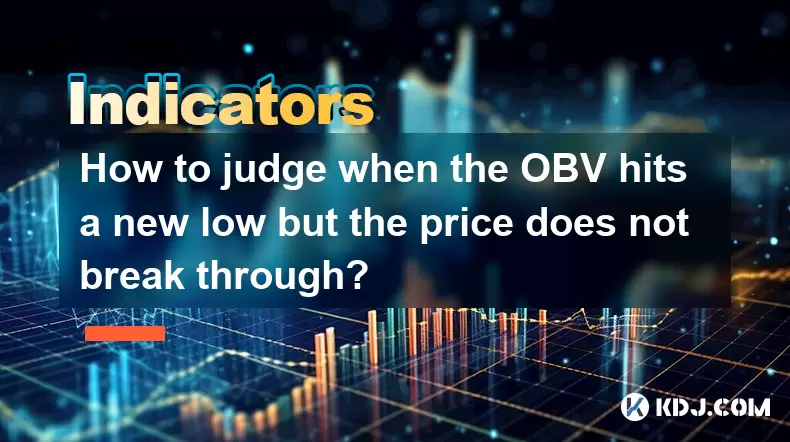
How to judge when the OBV hits a new low but the price does not break through?
Jun 24,2025 at 07:56pm
Understanding the Basics of OBV and Price ActionOn-Balance Volume (OBV) is a momentum indicator that uses volume flow to predict changes in stock or cryptocurrency prices. The core principle behind OBV is that volume often precedes price movement. When OBV hits a new low, but the price does not break through its previous support level, this can indicate...
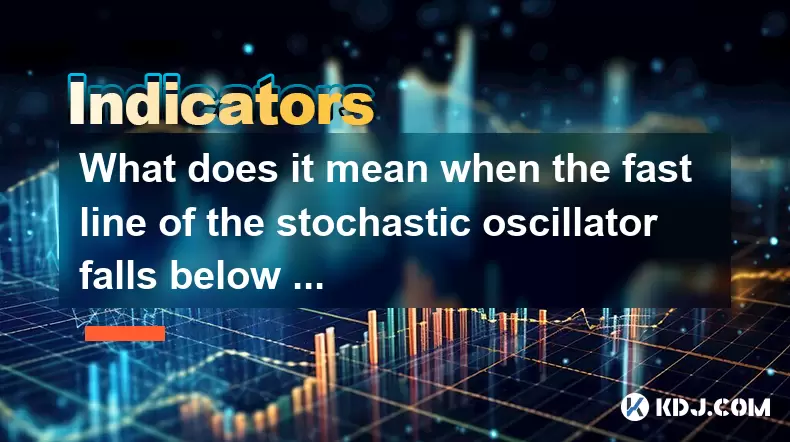
What does it mean when the fast line of the stochastic oscillator falls below the slow line?
Jun 24,2025 at 07:07pm
Understanding the Stochastic OscillatorThe stochastic oscillator is a momentum indicator used in technical analysis to assess overbought or oversold conditions in financial markets, including cryptocurrencies. It consists of two lines: the fast line (typically %K) and the slow line (typically %D). The fast line represents the current closing price relat...
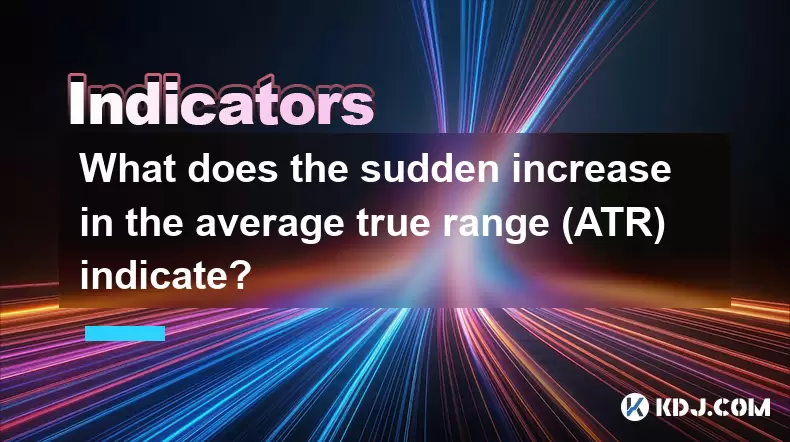
What does the sudden increase in the average true range (ATR) indicate?
Jun 24,2025 at 06:42pm
Understanding the Average True Range (ATR) in Cryptocurrency TradingThe Average True Range (ATR) is a technical indicator used by traders to measure market volatility. In the context of cryptocurrency, where prices can swing dramatically within short periods, ATR becomes an essential tool for assessing potential price movements. The ATR does not indicat...
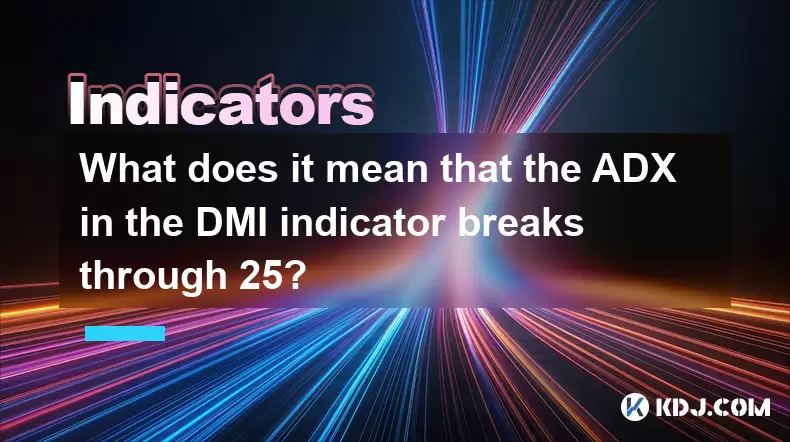
What does it mean that the ADX in the DMI indicator breaks through 25?
Jun 24,2025 at 06:21pm
Understanding the DMI Indicator and Its ComponentsThe Directional Movement Index (DMI) is a technical analysis tool used to identify the strength and direction of a trend in cryptocurrency markets. The indicator consists of two primary lines: the Positive Directional Indicator (+DI) and the Negative Directional Indicator (-DI). These lines help traders ...
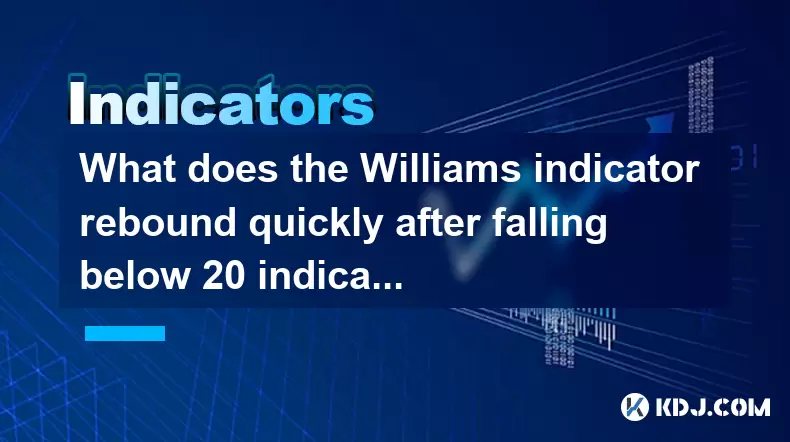
What does the Williams indicator rebound quickly after falling below 20 indicate?
Jun 24,2025 at 04:49pm
Understanding the Williams %R IndicatorThe Williams %R indicator, also known as Williams Percent Range, is a momentum oscillator used in technical analysis to identify overbought and oversold conditions in financial markets, including cryptocurrencies. It was developed by Larry Williams and typically operates on a scale from 0 to -100. In the context of...
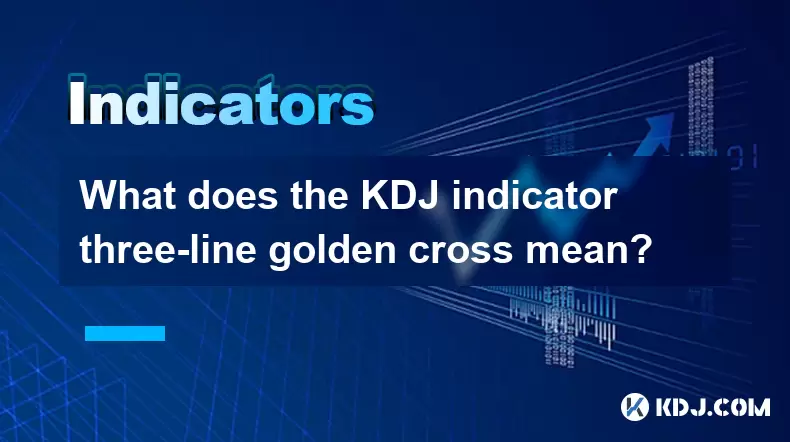
What does the KDJ indicator three-line golden cross mean?
Jun 24,2025 at 05:28pm
Understanding the KDJ Indicator in Cryptocurrency TradingThe KDJ indicator is a technical analysis tool widely used in cryptocurrency trading to identify potential buy and sell signals. It combines elements of two other indicators: the Stochastic Oscillator and the J line, which acts as a signal line. The KDJ consists of three lines — K, D, and J — each...

How to judge when the OBV hits a new low but the price does not break through?
Jun 24,2025 at 07:56pm
Understanding the Basics of OBV and Price ActionOn-Balance Volume (OBV) is a momentum indicator that uses volume flow to predict changes in stock or cryptocurrency prices. The core principle behind OBV is that volume often precedes price movement. When OBV hits a new low, but the price does not break through its previous support level, this can indicate...

What does it mean when the fast line of the stochastic oscillator falls below the slow line?
Jun 24,2025 at 07:07pm
Understanding the Stochastic OscillatorThe stochastic oscillator is a momentum indicator used in technical analysis to assess overbought or oversold conditions in financial markets, including cryptocurrencies. It consists of two lines: the fast line (typically %K) and the slow line (typically %D). The fast line represents the current closing price relat...

What does the sudden increase in the average true range (ATR) indicate?
Jun 24,2025 at 06:42pm
Understanding the Average True Range (ATR) in Cryptocurrency TradingThe Average True Range (ATR) is a technical indicator used by traders to measure market volatility. In the context of cryptocurrency, where prices can swing dramatically within short periods, ATR becomes an essential tool for assessing potential price movements. The ATR does not indicat...

What does it mean that the ADX in the DMI indicator breaks through 25?
Jun 24,2025 at 06:21pm
Understanding the DMI Indicator and Its ComponentsThe Directional Movement Index (DMI) is a technical analysis tool used to identify the strength and direction of a trend in cryptocurrency markets. The indicator consists of two primary lines: the Positive Directional Indicator (+DI) and the Negative Directional Indicator (-DI). These lines help traders ...

What does the Williams indicator rebound quickly after falling below 20 indicate?
Jun 24,2025 at 04:49pm
Understanding the Williams %R IndicatorThe Williams %R indicator, also known as Williams Percent Range, is a momentum oscillator used in technical analysis to identify overbought and oversold conditions in financial markets, including cryptocurrencies. It was developed by Larry Williams and typically operates on a scale from 0 to -100. In the context of...

What does the KDJ indicator three-line golden cross mean?
Jun 24,2025 at 05:28pm
Understanding the KDJ Indicator in Cryptocurrency TradingThe KDJ indicator is a technical analysis tool widely used in cryptocurrency trading to identify potential buy and sell signals. It combines elements of two other indicators: the Stochastic Oscillator and the J line, which acts as a signal line. The KDJ consists of three lines — K, D, and J — each...
See all articles
























































































